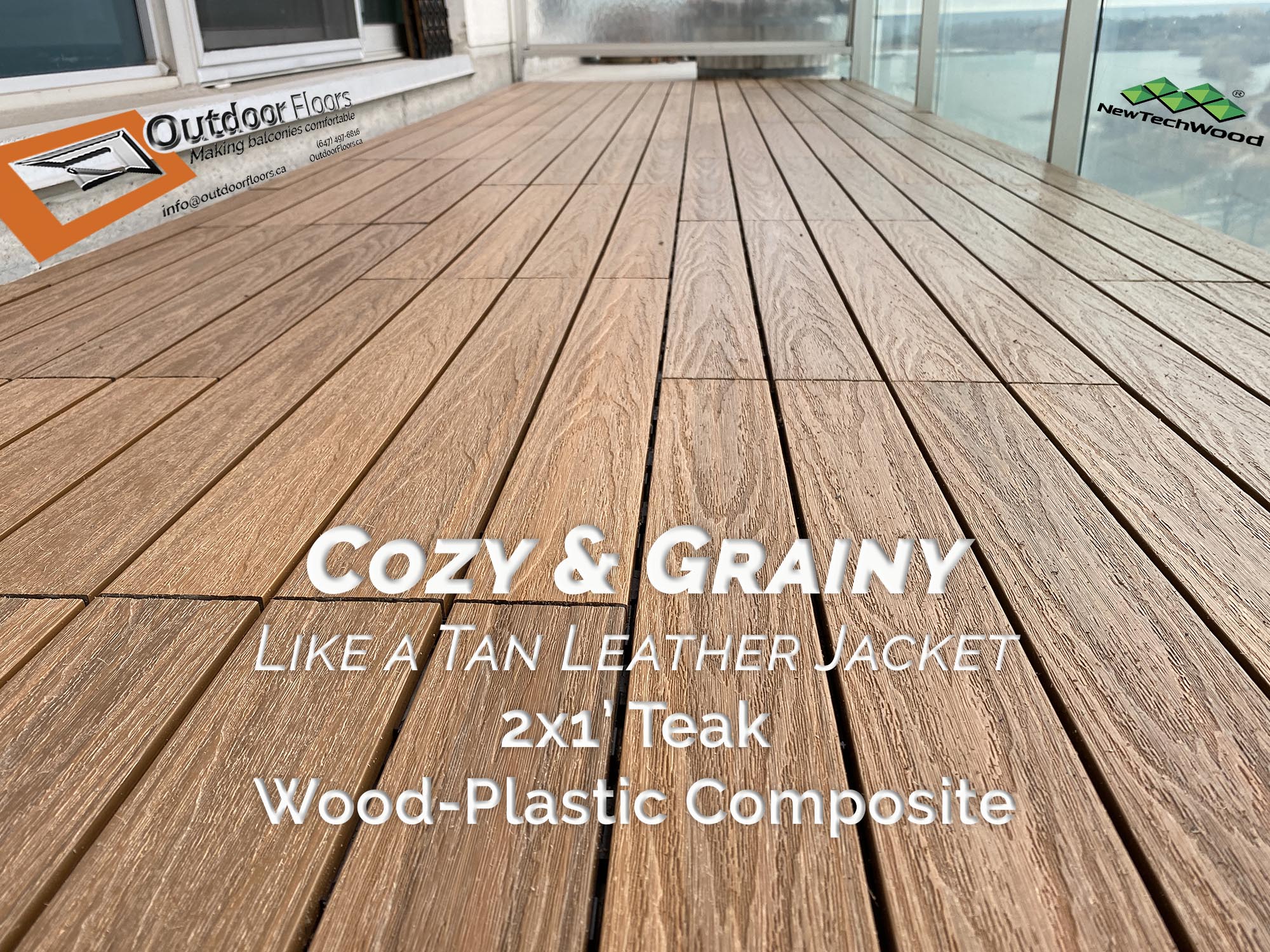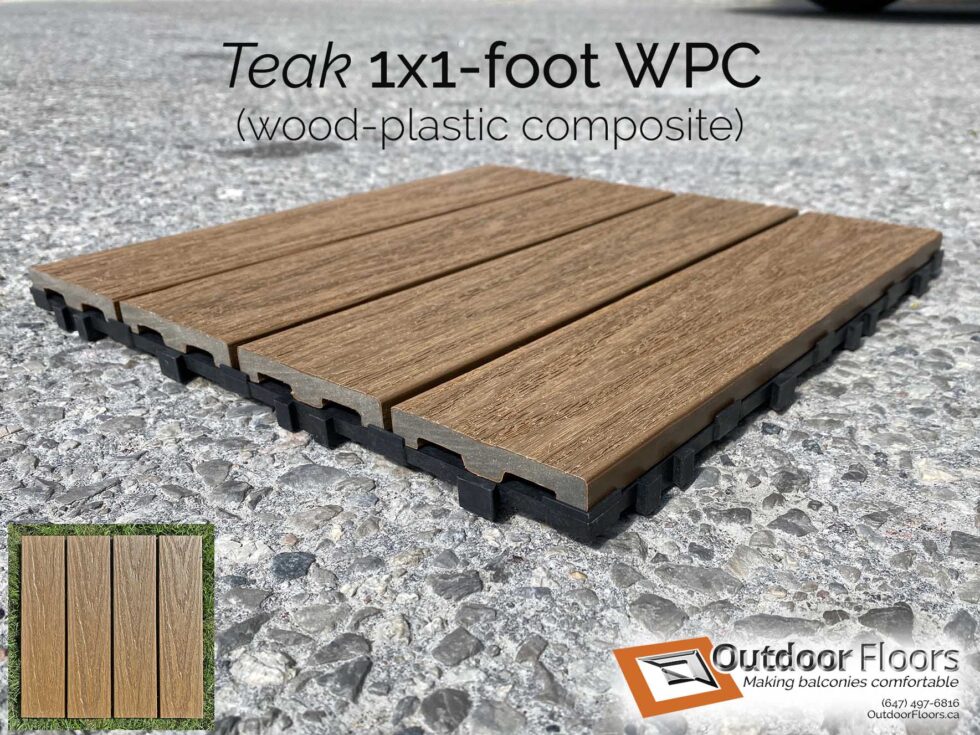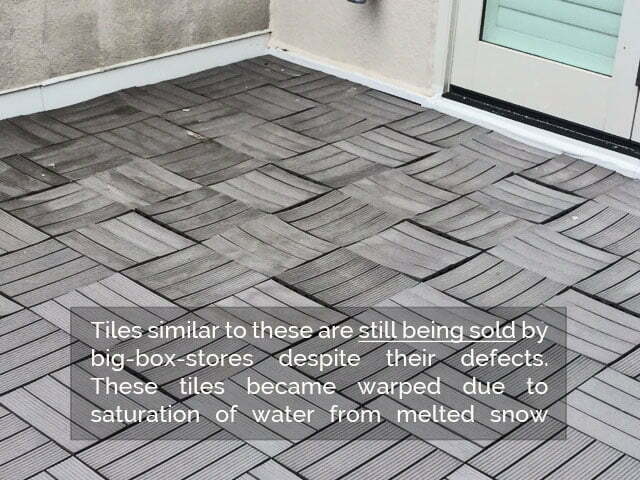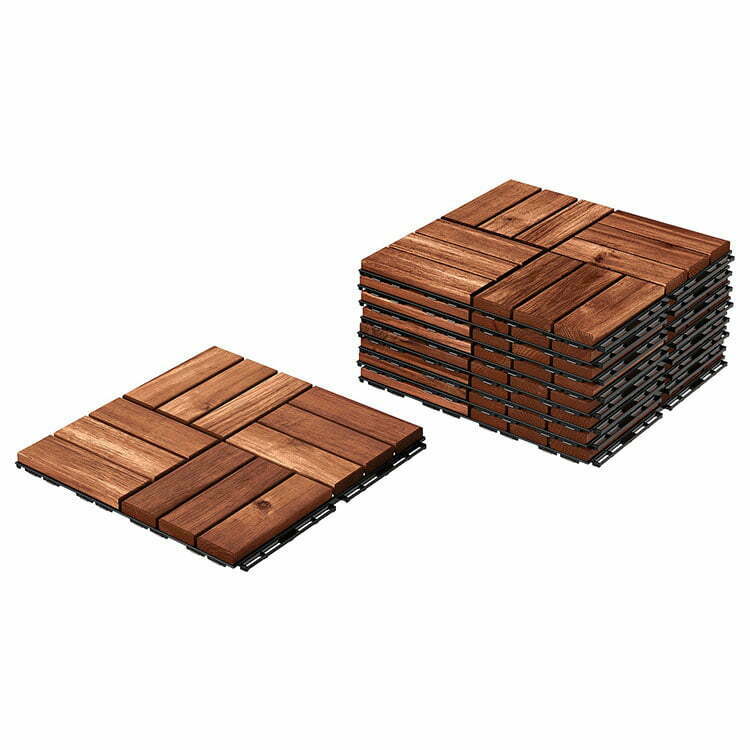Review of the Best Outdoor Flooring Deck Tile Products 2021
From a Professional Balcony Floor Installer’s Perspective
In Toronto, Canada and just about any urban center elsewhere in Canada and USA, many big box hardware stores offer special flooring products for outdoor use. Some consumers will install these clickable, interlocking deck tiles on their own condo balcony and rooftop terrace floors.
Others hire companies like us to do the installation because although at first glance it might seem simple, there’s usually some sort of complication forcing the need to cut tiles. This happens around balcony railing posts, electrical outlet boxes and other obstructions.
Professional balcony flooring installations will give rise to that ‘professional look’ where obstructions are properly cut around, gaps are avoided, and cool patterns can be installed that otherwise wouldn’t have been thought of.
We are in our 8th season of operation at Outdoor Floors in Toronto and have learned much along the way about outdoor flooring products. So, we wanted to share this knowledge with prospective buyers to help make informed decisions about the various deck tile products with their pros and cons.
Article Summary
- Capped wood-plastic composite (WPC) deck tiles — superior to all below. Their cap is the key.
- Acacia wood deck tiles — inferior due to fading
- Plastic Resin deck tiles — cheap, lightweight, prone to fading
- Rubber deck tiles — excellent in terms of durability but visual appeal lacking
- “Chunky Slat” plastic, wooden or composite deck tiles — hard to clean
- Always keep replacement tiles after your balcony flooring installation
Capped Wood Plastic Composites (WPC)
Capped wood-plastic composite deck tiles have taken the lead in the world of outdoor flooring. This is because they’re exceptionally durable, visually stunning materials with minimal need for maintenance (cleaning, essentially). They’re an improvement over their uncapped predecessors because the hard-shell cap layer, which is baked into the composite tile slats during manufacturing, forms a barrier to the elements. To learn more about capped composites on our website, go here. Rest assured, they will last a very long time but this brings with it another set of issues.
In the case of an uncapped, early generation deck tile, surface stains were caused by standing small puddles of rain water (see photo, below-left). Accumulation over time led to a visually inferior outdoor floor. Removing the markings was very difficult process and involved harsh bleaching agents. Capped WPC products, with a hard-shell, glossy layer, don’t have this issue.
Water Absorption into a Deck Tile is Never Good
Another major issue with uncapped composites is rainwater can soak into the tile through the slat surface and edges. This is the case in the second photo where water absorption with repeated heat-dry cycles under the summer sun caused them to warp.
In addition, if the cap has a matte (flat), non-gloss finish, then the tile is prone to scuffing. This happens when those sitting in plastic patio chairs slide it to stand up. Accumulation of scuff marks over time become unsightly and sometimes will lead to replacement of the entire deck tile floor (sorry, no photos).
Lastly, some tile suppliers falsely claim their tiles are capped. If the tile has a matte finish (similar to the cut edges), then it’s effectively not capped and be prone to scuff marks, stains and warping.
Lack of a glossy, protective hardshell cap allowed rainwater absorption and subsequent warping.
Warping can also occur if a composite deck tile floor doesn’t breathe. Similar to uncapped tiles discussed above, moisture becomes trapped due to lack of ventilation and will eventually absorb into the wood or plastic composite material. This leads to warping, fungal and mildew growth and eventual decay.
Acacia Wood Tiles are Cheap for a Reason
Many deck tile manufacturers, including Ikea’s Runnen series Home Depot’s Interbuild tiles offer what appears to be a nice looking acacia wood tile. These come in a preset “parquet” pattern (alternating slats arranged at 90° to each other). However, in only two to three seasons and depending on degree of sun exposure, they will fade and do so in highly irregular patterns. Ultimately, the balcony floor will need replacement even if attempts are made to stain them. Clearly, acacia wood deck tiles are not suitable for outdoor use (best suited for indoor use or on balconies with near zero sun exposure).
















